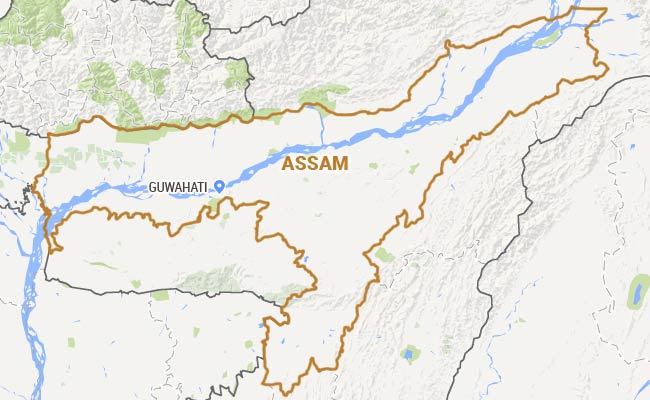By M Rajshekhar
Delays in funding
have brought the state’s healthcare to the brink of complete breakdown.
The situation is only going worse unless the government finds a quick
solution.
One late
evening in April, a senior official with the Mizoram health
administration sat in his office in Aizawl, frustrated and angry. It was
dark outside. Most of his staff had left for the day. “If they delay it
by two months it is okay, if they delay it by three months we may
manage, but it is four months now,” said the official, with discernible
worry.
The Mizoram Health Society, which decides how healthcare
funds get used in the state, was to get Rs 25 crore from the treasury
last November. That was the third and final instalment for the year
2014. Even today, the society is waiting for the funds transfer.
While the official watches helplessly, all around him the healthcare system is collapsing.
Funds
are needed for running hospitals and clinics, for programmes fighting
malaria, tuberculosis and disease control, for immunisation, family
planning, childbirth and care of new mothers. The delay is disrupting
them all. “It’s not that our funds don’t come,” the health official
said. “They eventually do. But the problem is the mismatch between the
routing of funding and the needs of the schemes.” To tide over these
shortages, he added, “We are telling staff to take loans to keep the
work going. That we will reimburse them when the money comes.”
In the meantime, the department is cutting back on essential services.
About
200 kilometres from Aizawl, in Champhai district, a white-coloured
caravan makes its way down rutted and broken roads. At the head of the
Champhai health administration’s mobile medical unit is a minibus with
doctors and nurses. Behind them follow two more minibuses, one carrying
an X-ray machine and the other bearing a laboratory.
Till last
year, the mobile medical unit used to range across this district in
eastern Mizoram, spending as long as a week in every village. With money
drying up, things have changed.
Its trips are more sporadic now.
Zalawma, a former serviceman who now drives the minibus with the X-ray
machine, says the unit now covers shorter distances of 50-80 kilometres
and then heads back, leaving behind the rest of the 230 km long, 90 km
wide district. There is no way it can cover all the 83 villages in this
remote and sparsely-populated part of India. Last year, the mobile
medical unit did not function at all for two or three months.
Zalawma
says he has not been paid his salary since last August. The only reason
he manages despite this is because of his Rs 11,000 pension. Those
without pension, he says, are having a hard time. “They are borrowing
from everywhere.”
 Former serviceman Zalawma stands before the mobile medical unit minibuses in Champhai.
Former serviceman Zalawma stands before the mobile medical unit minibuses in Champhai.
Grimmer
than the medical workers’ situation is the state of the populace. Most
people here subsist on livestock and farming, neither of which yields
much cash income. But since the medical units are not coming to them,
they are being forced to pay to travel to the units or to Champhai for
health check-ups.
“The mobile medical units used to reach people
who were far away from the primary health centres,” said Dr
Lalnuntluangi, Champhai’s medical superintendent. “There are some people
who cannot travel. Normal people can always come. But people with HIV,
if they do not have the money, they may not be able to come.”
It
has been four or five months since the district administration received
funds from the state health department, says Lalnuntluangi. This delay
has put the local administration in the impossible position of choosing
between running local medical infrastructure like the hospital and
primary health centres, programmes such as immunisation, and keeping the
mobile medical units on the road. In Champhai, it has picked
immunisation.
The mobile units travel only when funds arrive. “We
need money to buy medicines for the free clinics, dearness allowance
for the staff, and fuel for the vehicles,” said Lalnuntluangi. “We stop
work and start again when the money comes. We cannot go when there is no
money.”
Even then, there are complications. The unit’s doctor
has left and there is no replacement. The mobile unit runs by borrowing
doctors from the civil hospital which, in turn, affects the hospital.
This, says Lalnuntluangi, is another reason why the unit is making
shorter trips than before.
 Children
in Zochachhuiah village in Lawngtlai. Faced with insufficient funds,
the state health society is prioritising immunisation over everything
else.
Children
in Zochachhuiah village in Lawngtlai. Faced with insufficient funds,
the state health society is prioritising immunisation over everything
else.
Similar choices are faced by the Mizoram health
society at Aizawl. Across the state, while the immunisation programme is
being protected, other services are witnessing cutbacks. Medical staff,
for instance, has not been paid since January, and there is a shortage
of medicines for drug-resistant tuberculosis.
The Janani Suraksha
Yojana, a scheme to reduce neo-natal and maternal deaths, has suffered
the most. “The Ashas [accredited social health activists] are not
getting any payment,” said the senior official in the Aizawl office.
“The hospitals have not been paying the mothers either.”
How did things reach such a pass?
According
to the official, the problem started with a change during the final
months of the United Progressive Alliance government in how funds flow
to Mizoram’s health society. “Under the old system, the money came to
the Health Society directly from the Union Ministry of Health,” he
explained. “But now, the Central ministry sends money to the state
treasury, which then releases it to the society.”
The trouble is
that “the money gets stuck in the treasury”. said the senior official on
condition of anonymity. "It is not releasing the money on time."
To
understand why the treasury is holding up funds for healthcare, it is
important to look at the state’s economy first. Like other states in the
North East, it depends on the Centre for most of its funds. Revenues
generated within Mizoram are a tenth of what the Centre gives it each
year.
Between
state revenues and its share of Central taxes, Mizoram gets Rs 1,580
crore to spend any way it likes. The rest comes with preset uses.
However, in the recent past, the state’s expenses have exceeded Rs 1,580
crore.
In 2010, Mizoram accepted the Sixth Pay Commission’s
recommendations and increased the salaries of state government
employees. Between that and subsidies on power, food and water alone,
the state is spending close to Rs 2,000 crore each year.
This has
created a cash flow problem for the state government. It has high
monthly expenses but unpredictable monthly income – it doesn’t know when
the Centre’s allocations will come.
Unable to balance expenses
and inflows, it periodically runs out of money. At times like these, it
either has the choice of borrowing from banks or, like the hapless
official in the Health Society, of redirecting funds towards expedient
or urgent needs. It chooses the latter, rerouting Central allocations
towards meeting its monthly expenditure like government salaries.
When
the Centre decided to send healthcare funding to the state treasury
instead of to the state Health Society, this swamp of expediency
engulfed that money too.
In Mizoram, delays in allocations have
become the rule, not an exception. As previous stories in this series of
Scroll.in have described, funding delays are threatening the AIDS programme, forest guards in the Dampa Tiger Reserve have
not received salaries
for six months. In March, students went on strike protesting about
delays in their scholarships. Teachers in middle schools, recruited
under the Sarva Shiksha Abhiyan, are facing similar delays with their
salaries.
This pattern extends beyond welfare programmes. Take
the Pradhan Mantri Gram Sadak Yojana, a programme for building roads
linking villages to larger thoroughfares. According to an official in
the state Public Works Department, it was to get Rs 54 crore in
September. However, till now, it has received only a part this money, in
four instalments spread over January, February and March. The balance
of Rs 19 crore is still with the finance department.
 Funding
delays are not limited to just the health programme. T Lalramliama, a
school teacher and a graduate from the Pune University, is now driving
an autorickshaw to support his family.
Funding
delays are not limited to just the health programme. T Lalramliama, a
school teacher and a graduate from the Pune University, is now driving
an autorickshaw to support his family.
Not all of this
can be blamed on the Centre. The state administration runs a loose ship.
It is overstaffed. It runs large welfare programmes like the New Land
Use Policy, which was meant to create alternative livelihoods for jhum
farmers but is mainly used by the ruling Congress government to dispense
political patronage. Furthermore, these delays are not unique to
Mizoram. “Every state in the North East is facing this problem,” said
the health official. “Money is being pooled in the finance department.”
Still, what is worrying is that things are going to get much worse.
An
overhaul of central funding to states is underway. Acting on the 14th
Finance Commission’s recommendations, the Centre will from now on give
states a larger share of central tax revenues – from 32% to 42% – while
cutting back on the programmes it funds in states.
This includes both states’ development schemes and recurring expenditure (like salaries) for some centrally-funded programmes.
Abhijit
Sen, a former member of the erstwhile Planning Commission, says the
14th Finance Commission’s recommendations will hurt states like Mizoram.
They will “lose more than the additional tax devolution they get. They
will find a large source of money is no longer there”.
Till now,
officials in the Mizoram finance department do not know precisely what
the new allocation will be. An official in the state’s planning
department said, “Till now, after discussions with the Planning
Commission, the size of the state budget used to be fixed in January and
the allocations would come in March.”
This year, however, that
process has not taken place – partly due to the decision to scrap the
Planning Commission. “So far there is no allocation from the central
government,” said the planning department official. “There is no
indication either about the allocation. The 14th Finance Commission has
released some numbers. But we do not know how much we are getting.”
If
the allocation does fall, can the state make up that deficit? In recent
months, the state government has increased the cost of food in its
ration shops. It has repealed prohibition even at the cost of
displeasing the Church in a state where 85% of the population is
Christian. The state government’s fiscal policy statement for 2014-’15
says it expects to earn Rs 30 crore-Rs 40 crore more annually as excise
from alcohol. But that is nowhere enough.
One way out of this
mess could be provided by new planned roads that seek to connect Mizoram
to the rest of the world. The Kaladan Multi-Modal Transit Transport
Programme, for instance, will link Mizoram to Sittwe, a port in Burma,
but it is running late on the Burma side.
For the people of Mizoram to get better healthcare, the state government will have to think of something else and fast.
Source: scroll.in















